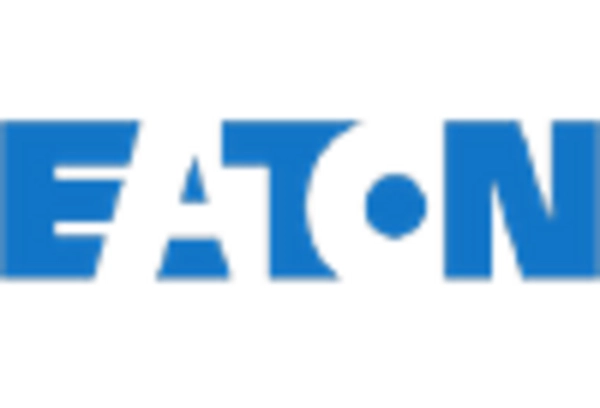Regulatory Compliance and Standards
Regulatory compliance is a significant driver for the load bank market in the US. Various industries, including telecommunications, data centers, and manufacturing, are subject to stringent regulations regarding power reliability and safety. Load banks are essential tools for ensuring that backup power systems meet these regulatory standards. For instance, the National Fire Protection Association (NFPA) and the Institute of Electrical and Electronics Engineers (IEEE) have established guidelines that necessitate regular testing of backup generators. As companies strive to comply with these regulations, the demand for load banks is expected to rise. The load bank market is projected to grow at a CAGR of approximately 6% over the next five years, driven by the need for compliance and the increasing focus on operational safety. This trend underscores the importance of load banks in maintaining industry standards and ensuring uninterrupted power supply.
Rising Awareness of Power Quality Issues
Rising awareness of power quality issues is emerging as a critical driver for the load bank market. In the US, businesses are increasingly recognizing the impact of power quality on operational efficiency and equipment longevity. Fluctuations in voltage and frequency can lead to equipment failure and costly downtime. Load banks are utilized to simulate various load conditions, allowing companies to assess the performance of their power systems under stress. This proactive approach to power quality management is likely to drive demand for load banks, as organizations seek to mitigate risks associated with power disturbances. The load bank market is expected to benefit from this trend, as more industries prioritize power quality assessments to enhance reliability and reduce operational costs. Consequently, the focus on power quality is likely to shape the future landscape of the load bank market.
Technological Innovations in Load Bank Design
Technological innovations in load bank design are playing a pivotal role in shaping the load bank market. Advances in materials and engineering have led to the development of more efficient and compact load banks, which are easier to transport and deploy. These innovations cater to the evolving needs of industries that require flexible and reliable testing solutions. For instance, the introduction of portable load banks has made it feasible for companies to conduct on-site testing, enhancing operational efficiency. The load bank market is projected to witness a surge in demand for these advanced solutions, as industries seek to optimize their testing processes. Furthermore, the integration of smart technologies into load bank systems allows for real-time monitoring and data analysis, providing valuable insights into power system performance. This trend indicates a shift towards more sophisticated load bank solutions, which could redefine industry standards.
Expansion of Data Centers and IT Infrastructure
The expansion of data centers and IT infrastructure in the US is significantly impacting the load bank market. With the growing reliance on digital services and cloud computing, the demand for data centers has surged. These facilities require robust power systems to ensure continuous operation, making load banks indispensable for testing and maintaining backup generators. The load bank market is projected to reach a valuation of 500.0 USD Million by 2027, largely driven by the data center sector. As companies invest in new technologies and infrastructure, the need for reliable power solutions becomes paramount. Load banks facilitate the testing of these systems, ensuring they can handle peak loads and operate efficiently. This trend indicates a strong correlation between the growth of IT infrastructure and the demand for load banks, positioning the market for sustained growth in the coming years.
Increasing Adoption of Renewable Energy Sources
The load bank market is experiencing a notable shift due to the increasing adoption of renewable energy sources in the US. As solar and wind energy become more prevalent, the need for reliable backup power systems intensifies. Load banks play a crucial role in testing and maintaining these renewable energy systems, ensuring they operate efficiently under various conditions. The US government has set ambitious targets for renewable energy, aiming for 50% of electricity generation from renewables by 2030. This transition necessitates robust testing solutions, thereby driving demand in the load bank market. Furthermore, the integration of renewable energy into the grid requires load banks to simulate real-world conditions, which is essential for performance validation. Consequently, this trend is likely to bolster the load bank market as stakeholders seek to enhance energy reliability and sustainability.

















Leave a Comment